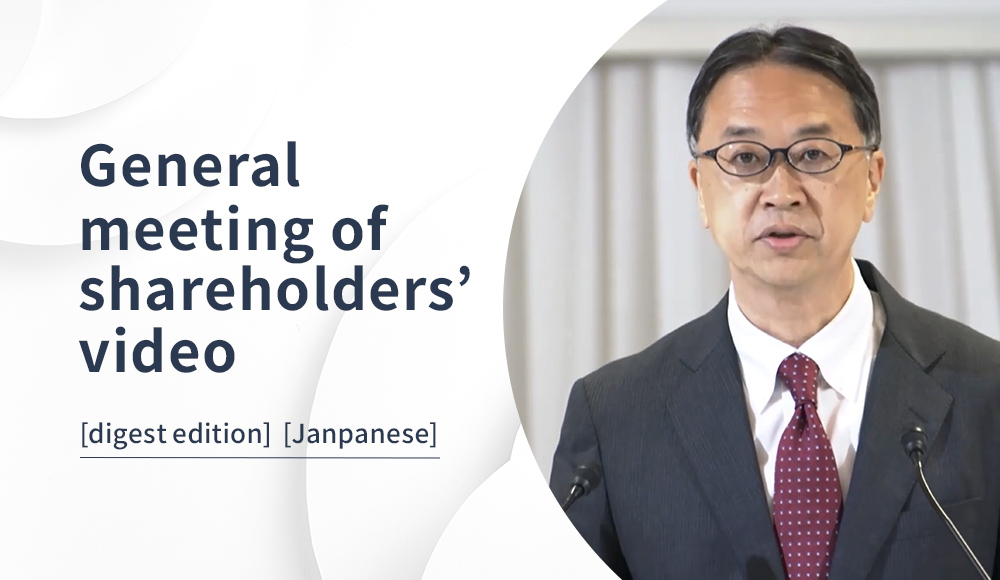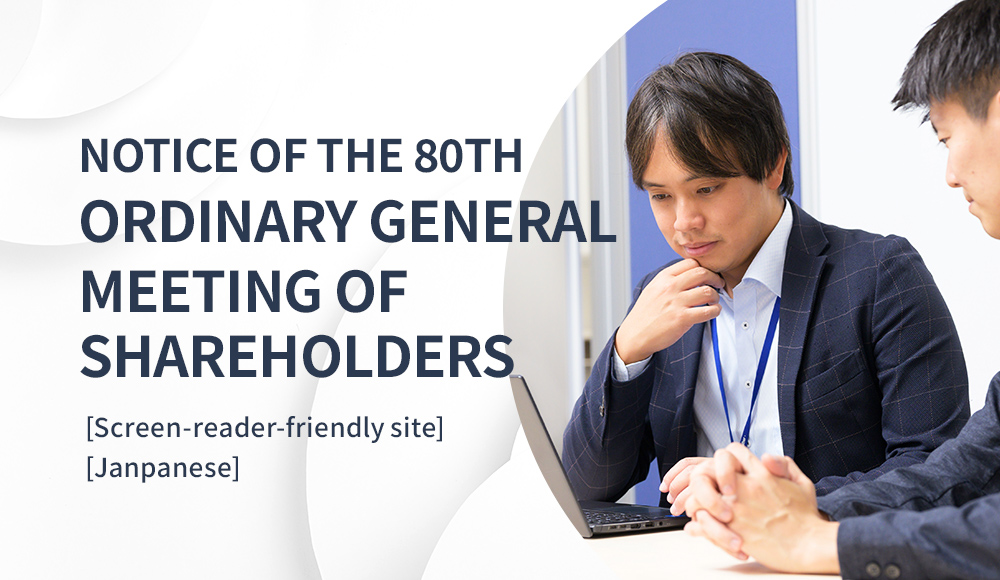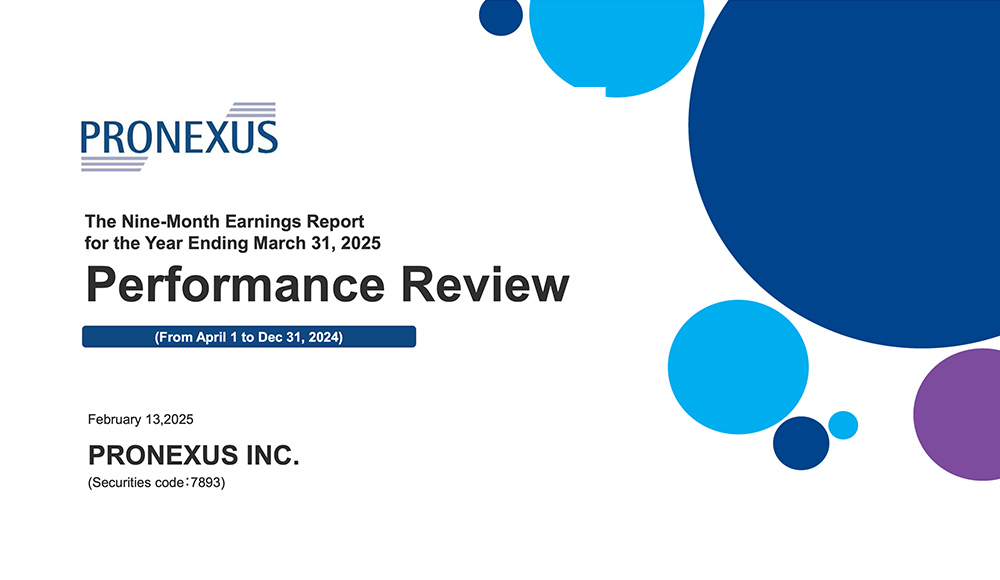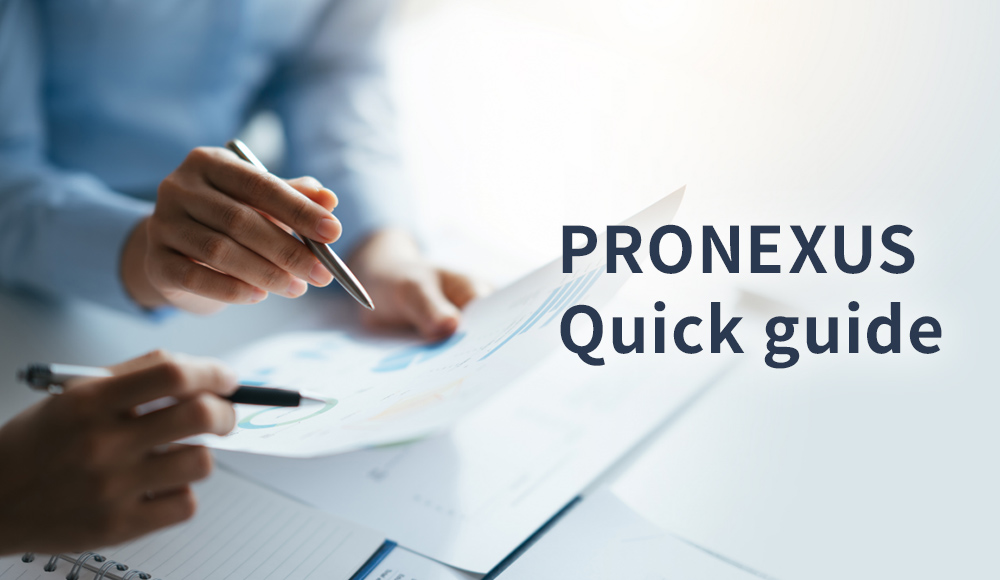Corporate information
Corporate governance
Basic approach
The Company aims to maximize shareholder value and achieve enduring development and growth that is based on recognition by shareholders and clients. It also strives to continually revise and improve its business management structure from the perspective of effectiveness in order to enhance management efficiency and fulfill its management responsibilities in an appropriate and fair manner. In addition, we make every effort to disclose accurate management information in a timely manner, while strengthening our monitoring and checking functions, improving transparency, and ensuring compliance and risk management.
Overview of corporate governance and internal control of the Company

Establishment of Corporate Governance Guidelines
In line with the purpose of Japan’s Corporate Governance Code, we established the PRONEXUS Corporate Governance Guidelines, which set out our corporate governance approach and framework for shareholders and other stakeholders, as well as a code of conduct for our officers and employees, with the aim of further enhancing our corporate governance.
The Corporate Governance Code is revised every three years, and PRONEXUS Corporate Governance Guidelines are reviewed as necessary to reflect the purpose of the revisions.
Corporate management structure
The Company has decoupled its decision-making functions from its business execution functions and has introduced an executive officer system in order to further enhance its business management structure. As of June 28, 2024 there were 34 Executive Officers in total, with three of these also serving concurrently as Directors.
Moreover, four Directors are outside Directors and three of the four Audit & Supervisory Board Members are outside Audit & Supervisory Board Members to ensure that the Board of Directors is adequately monitored.
Board of Directors
In light of its fiduciary responsibility to shareholders, the Board of Directors deliberates and makes decisions on important matters related to the management of the Company, and supervises the Company’s business and overall management, with the aim of enhancing corporate value over the medium to long term.
The Board of Directors has an appropriately balanced composition as a whole with members who have a deep understanding of the PRONEXUS Group’s business and diverse knowledge and expertise on finance and accounting, risk management, legal compliance and other related matters.
Audit & Supervisory Board
As an independent organization entrusted by shareholders, the Audit & Supervisory Board and Audit & Supervisory Board Members assume responsibility for establishing a high-quality corporate governance system that earns public confidence, which involves ensuring sound and sustainable corporate growth by auditing Directors in their execution of duties.
The Audit & Supervisory Board has a balanced composition of members who have the experience and capabilities as well as required knowledge relating to finance, accounting and legal affairs, such that is appropriate to fulfill expected roles and responsibilities in an effective manner. Accordingly, the Audit & Supervisory Board has one or more members equipped with sufficient insight particularly with respect to finance and accounting.
Medium- to long-term management strategies
The Company has its Board of Directors establish medium-term management plans and fiscal year plans, thereby articulating targets to be achieved by the Company and also articulating performance targets for each of its divisions, which are under the supervision of an Executive Officer. The Board of Directors furthermore ensures that such progress is periodically reported at meetings of Executive Officers and supervises Executive Officers in their execution of duties.
Internal control
In accordance with the PRONEXUS Internal Control System Basic Policy, the Company has established an organization responsible for promoting company-wide compliance, along with related rules and compliance manuals. It furthermore provides ongoing training to all employees on compliance matters. In accordance with its Risk Management Rules, the Company supervises and promotes risk management throughout the entire Company and has established a structure whereby each of its business departments performs proper risk management.
Risk and compliance management
The General Affairs Department and the Compliance and Quality Management Division oversee and promote PRONEXUS’s company-wide risk and compliance management. Furthermore, we hold regular training sessions twice a year for insider trading prevention education and compliance education, and also conduct comprehension tests via e-learning.
Ensuring appropriate information disclosure and transparency
In recognizing the importance of managing important undisclosed information that could potentially influence the decisions of investors, the Company stringently manages such information in accordance with its Disclosure Policy and Investor Relations Policy. Furthermore, the Company provides English-language versions of its quarterly financial results reports, quarterly financial results briefing documents, and other main documents subject to disclosure, from the perspective of ensuring fairness with respect to foreign shareholders. In addition, the PRONEXUS Corporate Governance Guidelines have been published on the Company’s website.
Remuneration for Directors and Audit & Supervisory Board Members
The Company resolved its policy for determining matters associated with remuneration, etc. for individual Directors (the “remuneration policy”) at its meeting of the Board of Directors held on February 15, 2021, and furthermore revised the remuneration policy at its meeting of the Board of Directors held on May 13, 2022. Moreover, the Board of Directors deems that remuneration, etc. for individual Directors associated with the current fiscal year aligns with the remuneration policy, upon having confirmed that: the method for determining remuneration, etc. and remuneration, etc. itself are consistent with the remuneration policy resolved by the Board of Directors, and; recommendations from the Nominating and Remuneration Committee have been upheld.
An overview of the remuneration policy is as follows.
(i) Policy on determining amounts of remuneration, etc. for individual Directors and the calculation method thereof
Remuneration, etc. for individual Directors consists of fixed remuneration and performance-linked remuneration, which is provided based on corporate performance and each Director’s contribution to management. Fixed remuneration is provided commensurate with the responsibilities and title of each Director.
(ii) Policy on remuneration, etc. for individual Directors with respect to determining performance indicators associated with performance-linked remuneration, etc. and method for calculating amounts or quantities regarding such performance-linked remuneration, etc.
The Company enlists both quantitative assessment and qualitative assessment benchmarks in regard to decisions on performance-linked remuneration. With respect to quantitative assessment benchmarks, the Company bases its evaluation on revenue, operating profit, and profit attributable to owners of parent, as well as on progress made each fiscal year in achieving targets for operating margin and return on equity attributable to owners of parent (ROE) set as management indicators.
With respect to qualitative assessment benchmarks, the Company comprehensively evaluates each Director’s contribution to management respectively from short-term and medium- to long-term perspectives in terms of accomplishing objectives of key initiatives established by each Director at the beginning of the fiscal year.
(iii) Policy on determining proportions of remuneration, etc. for individual Directors allocated to the amount of remuneration, etc. described in (i), above, the amount of performance-linked remuneration, etc., and the value of non-monetary incentives, etc.
The Company sets amounts of performance-linked remuneration to a maximum of 40% of the amount of fixed remuneration, with amounts for individual Directors commensurate with the responsibilities and title of each Director. Outside Directors receive fixed remuneration only, given their position of independence from business execution.
(iv) Policy on determining timing and conditions for granting remuneration, etc. to Directors
The Company makes payment of cash to Directors on a monthly basis.
(v) Matters of delegating all or some decisions on remuneration, etc. for individual Directors to Directors or other third parties
Decisions on amounts of remuneration, etc. for individual Directors are entrusted to President and Representative Director Takeshi Ueno within a range approved at a shareholders’ meeting. However, the Company enhances fairness and transparency of processes for determining amounts of remuneration, etc. by having such matters deliberated by the Nominating and Remuneration Committee beforehand. The Board of Directors adopts a resolution delegating such authority each year to ensure that such delegated authority is executed appropriately.
Total amount of remuneration
| Positions | Number of recipients | Total amount of remuneration, etc. (Millions of yen) |
|---|---|---|
| Directors | 10 | 229 |
| [Of the above, outside Directors] | [3] | [22] |
| Audit & Supervisory Board Members | 4 | 35 |
| [Of the above, outside Audit & Supervisory Board Members] | [3] | [20] |
| Total | 14 | 265 |
| [Of the above, outside officers] | [6] | [42] |
Notes:
- The amount of remuneration, etc. for Directors does not include employee salaries of Directors who concurrently serve as employees.
- The Company’s quantitative assessment benchmarks for performance-linked remuneration, etc. and its results for the fiscal year ended March 31, 2023, were revenue of ¥26,804 million, operating profit of ¥2,212 million, and profit attributable to owners of parent of ¥1,618 million with the key management indicators, operating margin of 8.3% and return on equity attributable to owners of parent (ROE) of 6.8%. The Company has achieved its targets across all these indicators. The reason for using these indicators as assessment benchmarks is our belief that improving profitability and capital efficiency is important for the sake of seeking to sustainably enhance corporate value. The Company has accordingly established these benchmarks to serve as the Company’s key management indicators.
- At the 60th Ordinary General Meeting of Shareholders held on June 29, 2004, it was resolved that the maximum amount of remuneration for Directors shall be not more than ¥300 million per year (excluding the portion of employee salaries). The number of Directors as of the conclusion of said shareholders’ meeting was 12.
- At the 57th Ordinary General Meeting of Shareholders held on June 28, 2001, it was resolved that the maximum amount of remuneration for Audit & Supervisory Board Members shall be not more than ¥50 million per year. The number of Audit & Supervisory Board Members as of the conclusion of said shareholders’ meeting was four.
- The Board of Directors has delegated President and Representative Director Takeshi Ueno the authority to determine amounts of fixed remuneration for each Director and amounts of performance-linked remuneration, etc. for each Director excluding outside Directors, within a range approved at a shareholders’ meeting. As the reason for delegating this authority, the Company has judged that the President and Representative Director is qualified to ensure evaluation both quantitatively and qualitatively with respect to key initiatives undertaken by each Director, while taking into account financial performance and the business environment of the entire Group. Prior to making decisions on such delegated matters, the Nominating and Remuneration Committee confirms that such decisions are appropriate.
- The Company sets amounts of performance-linked remuneration, etc. within a range of 0% to 40% of fixed remuneration, upon having performed quantitative assessment as specified in note 2. above, as well as qualitative assessment of progress made in achieving the key initiatives established for each Director, in accordance with the remuneration policy.
Main activities
Attendance at Board of Directors meetings and Audit & Supervisory Board meetings
| Board of Directors meetings (held 10 times) | Audit & Supervisory Board meetings (held 12 times) | |||
|---|---|---|---|---|
| Number of meetings attended | Percentage of attendance | Number of meetings attended | Percentage of attendance | |
| Director Takatsugu Nagatsuma |
10 | 100% | - | - |
| Director Ken Shimizu |
10 | 100% | - | - |
| Director Ichiro Sakai |
10 | 100% | - | - |
| Audit & Supervisory Board Member Osamu Sudoh |
9 | 90% | 11 | 92% |
| Audit & Supervisory Board Member Takuya Oshida |
10 | 100% | 12 | 100% |
| Audit & Supervisory Board Member Yoshihiro Tsuda |
10 | 100% | 12 | 100% |
Dialogue at Board of Directors and Audit & Supervisory Board meetings
(Fiscal year ended March 31, 2024)
- Directors Takatsugu Nagatsuma, Ken Shimizu, and Ichiro Sakai actively engage in meaningful dialogue regarding overall management, drawing on their abundant experience and insight as managers.
- Audit & Supervisory Board Member Osamu Sudoh engages in dialogue from an expert perspective as an attorney at law, mainly regarding compliance with laws, regulations, and the Articles of Incorporation.
- Audit & Supervisory Board Member Takuya Oshida engages in dialogue from an expert perspective as an attorney at law, mainly regarding matters of business reorganization and overseas business.
- Audit & Supervisory Board Member Yoshihiro Tsuda engages in dialogue particularly on matters of finance and accounting mainly from an expert perspective as a certified public accountant.



